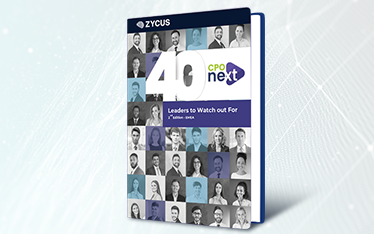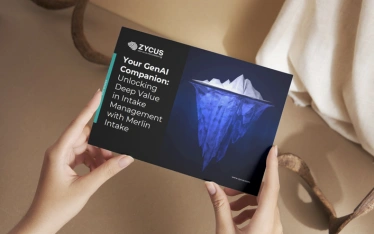Supplier scorecards are becoming an essential procurement tool for managing the performance and relationships of suppliers. Organizations that monitor key performance indicators of supply chain management in cost, quality, delivery, sustainability, and other areas obtain data-backed insights into the health of their suppliers. This approach enables informed decisions on rewards, penalties, segmentation, and other levers to optimize the supply base.
However, for scorecards to be truly valuable, enterprises must pick the right Supplier scorecard metrics that correspond with strategic goals, offer fine-grained visibility, and accurately depict supplier performance. Scorecards risk becoming mindless checklist exercises with minimal actionable intelligence if they are not carefully chosen.
This emphasizes how important it is to balance standard and customized metrics, offer suitable weights, and periodically assess for relevance to ensure that supply chain management KPIs align with business aims. Procurement executives can enhance supplier relationships and business outcomes by making faster and more informed decisions by converting scorecard data into relevant, actionable insights.
This blog will explore best practices for selecting, managing, and maximizing value from supplier scorecard metrics. The ability to extract strategic insights from supplier data represents the next frontier of elevated procurement performance.
Aligning with Business Objectives
Directly connecting key performance indicators of supply chain management to business aims and plans is the first step towards maximizing the value of scorecards. Rather than monitoring generic metrics, procurement leaders must ensure that scorecards align with the organization’s primary objectives regarding costs, innovation, sustainability, resilience, and other areas.
For instance, a business that pursues an aggressive cost optimization approach would prioritize price-focused measures, such as payment terms improvements, savings from negotiations, and spending reductions year over year. Organizations that prioritize quality may highlight data related to product failures, warranty claims, and customer satisfaction surveys.
Careful alignment also makes segmentation and customized scorecards for various supplier groups possible. While transactional suppliers monitor metrics linked to operational excellence, strategic partners could have more KPIs related to innovation. With this focused approach, insights that are specific to the partnership are provided.
Beyond mirroring strategies, KPI selection must also provide visibility into foundational supply chain performance metrics across key categories:
-
- Cost: Metrics around negotiated savings, price benchmarking, total cost reductions, and more drive pricing insights.
- Quality: Defect rates, accuracy, specimen audits, and customer satisfaction reflect product/service quality.
- Delivery: On-time delivery percentages, fill rates, and lead time metrics indicate reliability.
- Sustainability: Carbon emissions, renewable energy %, and ethical audits highlight ESG performance.
Explore Lythouse: ESG Software, Scope 3 Accounting, ESG Goal Tracking
- Innovation: R&D investment, new products launched, and more demonstrate innovation.
With strategic alignment complemented by foundational performance tracking, organizations gain a comprehensive view of supplier health and opportunities through the scorecard’s data-backed lens.
You May Find This Post Useful: Supplier Performance Evaluation – A Quick Checklist
Getting Granular with Metrics
Although core measures are essential for visibility, organizations also require customized, fine-grained KPIs that provide specific information on the performance of their suppliers. Beyond general measures at the surface level, chances for improvement are shown, and precise monitoring is made possible.
For example, metrics on lead times for different products and facilities have to be used in conjunction with total on-time delivery percentages, which are key components of supply chain key performance indicators. Root cause analysis can supplement failure rates and identify whether problems are caused by design flaws, inadequate planning, poor manufacturing, or insufficient quality assurance.
Customer satisfaction scores should segment feedback by product line, region, and other factors. Additional examples of granular metrics by category include:
Cost
- Spend by product/service categories
- Savings from should-cost modeling by material type
- Component price benchmarking relative to market rates
Quality
- First, pass yield rates by manufacturing line/product
- Capability analysis (CpK) for critical processes
- Returns by product model and reason codes
Delivery
- Expedited shipping instances and costs
- Peak period fill rates vs baseline
- Detailed lead time metrics by supplier geography
Sustainability
- Renewable energy usage by facility
- Waste generation rates by material stream
- Supplier audits detailing ESG practice maturity
Driving into this level of detail enables precise monitoring of performance patterns and improvement opportunities. Organizations gain clarity on where to target corrective actions and collaboration for maximum impact. Granular metrics unlock the next level of strategic supplier management.
Download White paper: Essential Components of a World-Class Supplier Performance Management Tool
Benchmarking Supplier Performance
When benchmarked, scorecards become more than straightforward reporting tools; they become practical tools for managing suppliers differently. Organizations can accurately segment partners by comparing supplier metric performance against peer groups.
Strategic benchmarking metrics include:
- Pricing for primary commodity inputs relative to market indexes
- First, pass yield rates compared to industry best practices
- Lead time performance ranked among peer suppliers
- Net Promoter Scores benchmarked against top performers
To reward and grow, high performers who exhibit exceptional performance are identified through external supply chain KPIs. Underperformers who qualify for managed phase-outs, re-negotiations, or improvement plans are also highlighted.
Internal benchmarking against past performance is equally crucial:
- Year-over-year price reductions for essential products/services
- Defect rates relative to internal quality targets
- Delivery metrics compared to baseline service levels
- Sustainability KPIs vs organization’s ESG commitments
Ongoing internal benchmarking demonstrates supply chain performance metrics over time and enables targeted collaboration for continuous improvement toward strategic goals.
Finally, benchmarking uncovers priority areas for developing organizational expertise:
- Procurement capability building where market prices are unfavorable
- Quality training if defect rates exceed industry averages
- Sustainability partnerships if ESG practices lag behind peers
Organizations can attain best-in-class performance throughout the supply base by focusing on specific areas using holistic supply chain KPIs. Scorecards are no longer just rear-view mirrors but flashlights illuminating the path ahead thanks to competitive intelligence.
Download our whitepaper: Supplier Performance Evaluation for Better Results
Weighting Supplier Scorecard Metrics Appropriately
To enhance usefulness, scorecards must appropriately weigh each KPI for supply chain department based on its relevance and influence on business objectives. Elevated weights for necessary parameters guarantee their proper attention while impeding the perception of supplier health from being distorted by less important indicators.
The influence of measurements on strategic priorities should be closely correlated with weights. Pricing and savings-related measures must be given far more weight than quality key performance indicators for supply chain management in a corporation aggressively pursuing cost containment. Organizations that prioritize brand equity and ESG commitments prioritize customer satisfaction and sustainability indexes, which are also key supply chain key performance indicators.
However, organizations should still guard against:
- Disproportionate weighting of easy-to-measure metrics like spend under management rather than value-driven KPIs.
- Legacy weightings that no longer reflect evolving priorities. As objectives change, weight rebalancing must follow.
- The trap of broad weighting equality results in directionally misleading scorecards.
- Metrics with high weights despite low impact on goals.
Best practices for optimal weighting include:
- Regular reviews of weight assignments relative to the latest priorities
- Input from cross-functional teams on weighting validity
- Data-based correlation analyses between weighted metrics and business KPIs
- Testing different weighting scenarios through simulations
Scorecard weighting is another tool for concentrating attention on the most critical things, provided that care appropriately reflects the underlying impact of measurements. Weight profiles divided into segments for strategic and transactional suppliers offer added refinement. Optimized, analytics-driven weighing is distinguished by its capacity to highlight success on high-impact key performance indicators for supply chain management.
Download our Research Report: Seven Keys to Better Sourcing and Supplier Management
Regularly Reviewing and Refreshing
As a result, it becomes vital to periodically review the existing supplier scorecard metrics and key performance indicators (KPIs) that you have implemented. Supplier performance metrics that were once vital may become less pertinent over time, while new areas of focus could emerge, necessitating the addition of new metrics to your scorecards.
An intelligent, AI-powered solution empowers you with the agility to iterate and refresh your supplier scorecards seamlessly. This powerful capability allows you to capture new priorities as they arise, ensuring that supplier performance evaluations align with your organization’s current objectives and market realities.
Leveraging an intuitive interface combined with advanced analytics capabilities, you can effortlessly add, modify, or remove supplier scorecard metrics and supplier performance metrics scorecards as needed. This flexibility enables you to swiftly adapt to your business landscape’s evolving market conditions, regulatory changes, or strategic shifts.
Moreover, robust reporting and data visualization features provide invaluable insights into the impact of these metric updates on supplier performance over time. This data-driven intelligence empowers you to make informed decisions, fostering continuous improvement in supplier relationships and driving sustainable value creation for your organization.
Leveraging AI for Supplier Scorecard Insights
Leveraging advanced natural language processing and machine learning capabilities, Merlin AI can autonomously generate comprehensive KPI for supply chain department scorecards. These scorecards encapsulate all the relevant performance data, KPIs, and metrics that matter most to your organization. With just a few clicks, you can seamlessly share these AI-generated scorecards with your suppliers, fostering transparency and collaboration.
This is where the power of Zycus’ Merlin AI can be a game-changer. Merlin AI goes beyond just scorecard creation. It acts as your intelligent data mining partner, uncovering hidden patterns, emerging trends, and actionable insights from your supplier performance data. Merlin’s cognitive analytics capabilities enable you to benchmark your suppliers against industry peers, providing a realistic context for performance evaluation.
As your business priorities evolve, Merlin AI assists in dynamically adjusting the weightage assigned to different supplier scorecard metrics, ensuring that your assessments align with your organization’s strategic objectives. This intelligent metric weighting ensures that you stay focused on the areas that truly drive value for your business.
Moreover, Merlin AI continuously monitors your supplier performance data, acting as a proactive early warning system. It can flag potential risks or deviations from expected performance levels, allowing you to take timely corrective actions and mitigate issues before they escalate.
In the era of intelligent procurement, Zycus’ Merlin AI empowers you to transform raw supplier data into actionable insights, driving informed decision-making and fostering sustainable supplier excellence across your organization. Request a demo today!
Related Reads:
- Press Release: Diving deep into Supplier Management Solutions with Zycus
- Top 10 Supplier Risk Management Best Practices For Procurement Professionals
- Supplier Performance Measurement: Keeping It Simple But Actionable
- Webinar: Strengthen your Supplier Management Capabilities
- Building Success Through a Solid Supplier Management Framework
- The Contract Management Software (CLM) Solution for global enterprises
- A 5-Step Process to Effective Supplier Management
- 8 Unique Phases of Supplier Lifecycle Management
- Catalyzing Success with Supplier Management Strategies in 2024
- Solution: End-to-End Supplier Risk Management Software Powered by GenAI
- Solution: Supplier Management Software









